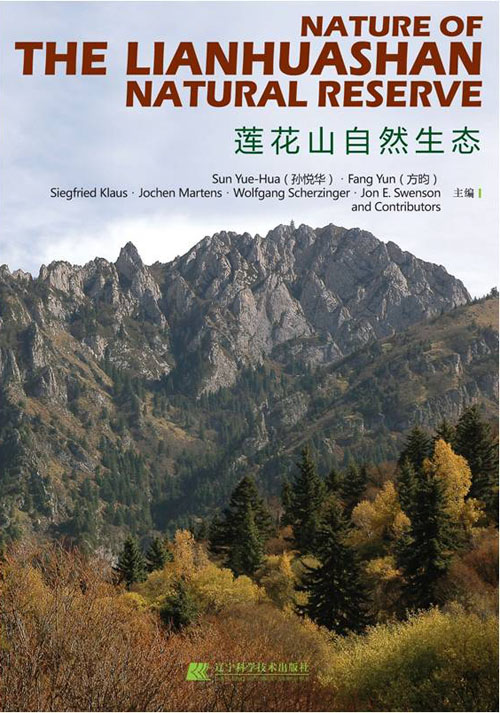
The Lianhuashan Natural Reserve is one of the youngest national reserves founded in China: a fascinating place, with a beautiful scenery dominated by white limestone mountains, an exceptional diversity of forests, flowering meadows, and a wide variety of flowering and fruiting shrubs. This creates a paradise for many plants and animals, especially for a multitude of birds. Now the reserve has also became a center of intensive, international research, primarily on birds.
Because we have become so fond of this wonderful place, and because we wish to describe the results of our research and the great potential that the Lianhuashan Natural Reserve has for the conservation of biological diversity in the region for a greater audience, the idea came up that we should describe the nature of Lianhuashan in a popular book. We decided to illustrate the book with photographs taken during the 12 years that scientific research was carried out. These photographs portray all seasons, from the last snow in April, when many species of migrating birds stop in this green island, to the spring and summer, when wildflowers are in bloom. From the colorful autumn and first snowfalls in October, to the winter with beautiful snow - covered mountain forests and only a few hardy bird species. Aside from the landscape, plants, and animals, we also wanted to mention the most typical local traditions and culture. This is because humans have also been a part of the ecosystem for a very long time, and their activities, including agriculture, the grazing of yak, sheep, and cattle, and harvesting foods and materials have affected the dynamics of the environment
We envisioned that this book would give some basic information and understanding of the nature and reserve to visitors and tourists. We expect that tourism will increase in the future, enhancing the income of local people. The new status of Lianhuashan as a “National Nature Reserve” should stimulate international interest in this fabulous mountain area in the Gansu Province in northwestern central China.
The study of the Chinese grouse under the leadership of Prof. Sun soon became a catalyst for new projects in the reserve and its surrounding. These projects included studies on songbirds, resulting in new species being described, on other endemic birds, such as the blood pheasant, the virtually unknown chestnut–throated partridge, the Sichuan jay and rare subspecies of the Tengmalm’s owl and the Ural owl. A preliminary list of birds was made, which included numerous species described for the first time in Gansu, such as the endemic Sichuan wood owl. As a base for studies of owls, a survey of small mammals also began. Since a basic knowledge of vegetation and plant communities was essential for the ecological studies, botanical studies were also initiated, primarily on the trees and shrubs. This resulted in a preliminary list of plants of the reserve as well.
In August 2002, a group of about 60 grouse researchers from 20 countries visited the reserve following the 9th International Grouse Symposium, which was held in Beijing under the leadership of Prof. Sun. A major aim for most of them was to observe the Chinese grouse for the first time in their lives. The international reputation of the Lianhuashan Natural Reserve thereafter increased markedly. In 2003, the reserve was granted the status of a “National Natural Reserve”, partially as a consequence of the scientific results obtained by the many years of international cooperative studies and the excellent cooperation between the reserve personnel and the researchers, resulting in many ideas for the establishment of future projects.
